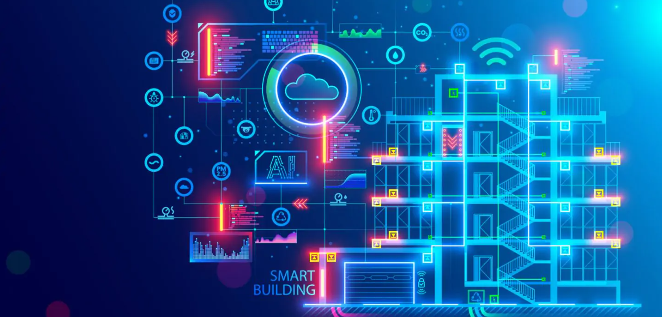
The Internet of Things (IoT) is rapidly transforming every industry, as it merges our physical and digital worlds. With the prevalence of wireless networks and affordable digital chips, almost any object can be turned into a smart, responsive device.
IoT broadly refers to a network of assets, devices, and people connected to the Internet to send and receive data. IoT has transitioned from being an emerging technology to an essential technology. It is shaping the construction industry’s future and the benefits of implementing IoT far outweigh the risks of delaying its adoption in the construction industry which requires on-time and on-budget completion of project deliverables.
Low IT costs, cloud computing, extensive low-power wide-area networks, industrial technology training programs, and other success factors have had a major impact on IoT availability and adoption. Being a high-risk industry, the construction fraternity has to find ways in which IoT can also help in reducing risks.
Here are ways in which the IoT is being adopted with the aim of reducing risks in the industry.
While the technology to remotely monitor construction and building site progress isn’t new, many companies failed to adopt this technology until pressed to do so by restrictive, pandemic-related on-site work regulations.
Remote construction monitoring allows employees who are not physically present to monitor projects with a range of tools. These tools allow managers to check project progress, track contractor activity with automated sensors, monitor dangerous activity and missing PPE, as well as check the use of machines, and geolocate equipment
By using one, or a combination of these tools, project managers can conduct checks, provide feedback, and solve problems from the office. The benefits are plentiful, from improving productivity and time management to reducing loss, and waste.
With construction cameras, safety hazards can be identified as well as health and safety violations. Unlike people who are subject to human error, digital monitors never sleep—therefore eliminating these errors and enhancing monitoring capacity.
Drones provide ariel views that help to alleviate the difficulties associated with manual inspection. Where projects being undertaken are tall and elaborate structures such as skyscrapers and bridges that need keen monitoring, drones are used to ensure safety measures are put in place and identify areas that need an upgrade.

The construction sector is also embracing virtual reality (VR) technology, which is enhancing safety protocols. In order to provide effective training programs, many companies are investing in virtual reality systems. The technology provides a comprehensive simulation of construction site hazards.
When builders use the technology for training, they decrease accidents by increasing individuals’ hazard awareness. Construction workers can also use virtual reality to create project designs.
Developing accurate project blueprints can reduce on-site material damage. Fewer broken building components can reduce the risk of falling and other injuries.
A digital fleet management system keeps a construction company’s project management goals on track and supports the day-to-day operations of multiple construction projects across sites. For example, mounting IoT-enabled trackers to construction assets provides higher accuracy and convenience. With the help of fleet tracking software, managers can find the best routes and send the nearest available drivers to fulfil site requirements.
This increases the construction company’s ability to respond to urgent changes in site requests and enables them to quickly adapt on the go without delays. Construction cameras have also been integrated with IoT tools such as Evercam’s Gate Report feature which identifies the type of vehicles that enters and exits the site as well as provides the relative data required by project stakeholders.
In the past, company safety procedures were often paper-based and labour-intensive, necessitating physical observation and documentation of operations in order to guard against accidents. Without key insights into safety performance, enhancing safety on-site can be extremely challenging. Additionally, these programs don’t offer real-time alerts of potentially hazardous or dangerous conditions before accidents occur.
Today, construction safety is easier to achieve and more attainable because of the digitization of operations. One may oversee construction and guarantee worker safety with mobile applications that permit remote monitoring without being physically present at the job site.
Evercam’s Snapmail feature comes in handy in such situations where one is able to schedule an email with a snapshot from the camera directly to other stakeholders. Snapmail is a perfect way to send a regular, scheduled reminder about all the key events and project milestones. This can be used to also alert stakeholders on any safety measure that hasn’t been implemented on the job site.
Upskilling requires training in every job capacity, but it is especially critical in the construction sector due to the numerous physical health concerns, such as back injuries and the toxic chemicals in paints.
All employees across numerous sites can acquire the same material by simplifying training sessions, preventing misinterpretations that could be disseminated through in-person training across numerous sites. Additionally, sessions can be recorded so that staff members can watch them again to refresh their memories. This guarantees good safety conditions because staff members can become much more familiar with important procedures.
Construction is a complex, risky business. But IoT solutions can help construction companies save time and money while reducing some risks. In particular, IoT data can be used to improve safety, optimize resources, and track progress on construction projects.
Besides improving worker safety, deploying technology can also increase worker productivity. If you’re interested in learning more about how IoT can reduce risks in construction, contact us today to book a demo. We’ll show you how our software can help you manage your construction projects more effectively and efficiently.